A Guide to Norwegian Christmas Traditions
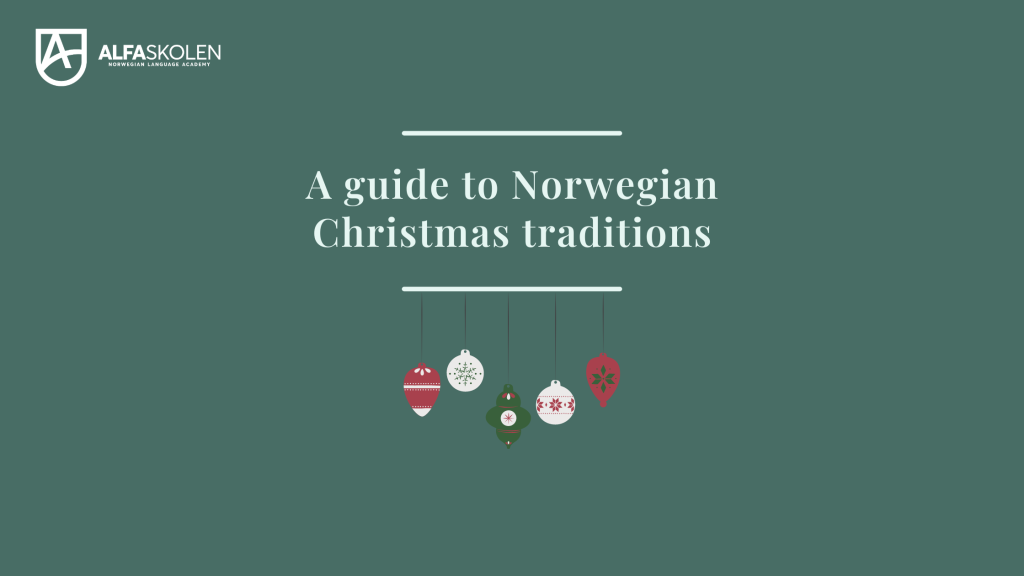
Curious about how Christmas is celebrated in the snowy landscapes of Norway? For anyone new to Norway, particularly those still navigating the nuances of the Norwegian language and culture, understanding and embracing local customs can be a delightful and enriching adventure. This article delves into the heart of Norwegian Christmas traditions, from the quirky Julebukk to the aquired taste of Lutefisk, and everything in between. Along the way, we’ll explore how these traditions intertwine with the Norwegian language and cultural fabric, offering a unique window into Norway’s festive spirit. Let’s embark on this journey to discover the festive wonders of Norway together!
The Magic of Advent in Norway
Celebrating the Countdown

In Norway, the Christmas season begins with the enchanting tradition of Advent, marked by lighting candles each Sunday, symbolizing hope and joy in the heart of winter. Norwegian homes glow with Advent stars (adventsstjerne), reflecting a cozy, communal spirit. This time of anticipation is not just about counting down to Christmas; it’s about warmth, family, and shared moments.
Complementing this traditional observance is the uniquely Norwegian custom of julekalender TV-series. These special Christmas-themed shows air daily from December 1st until Christmas Eve, much like opening a new door on an Advent calendar each day. Ranging from comedy to drama, these series are a beloved part of the holiday season, bringing families together for nightly entertainment.
The combination of Advent’s reflective moments and the Julekalender’s modern storytelling showcases the blend of tradition and contemporary culture in Norwegian Christmas celebrations. For expats and visitors, engaging in these customs offers a delightful glimpse into Norway’s festive spirit.
The Enchantment of Nisse
Fjøsnisse and Julenisse
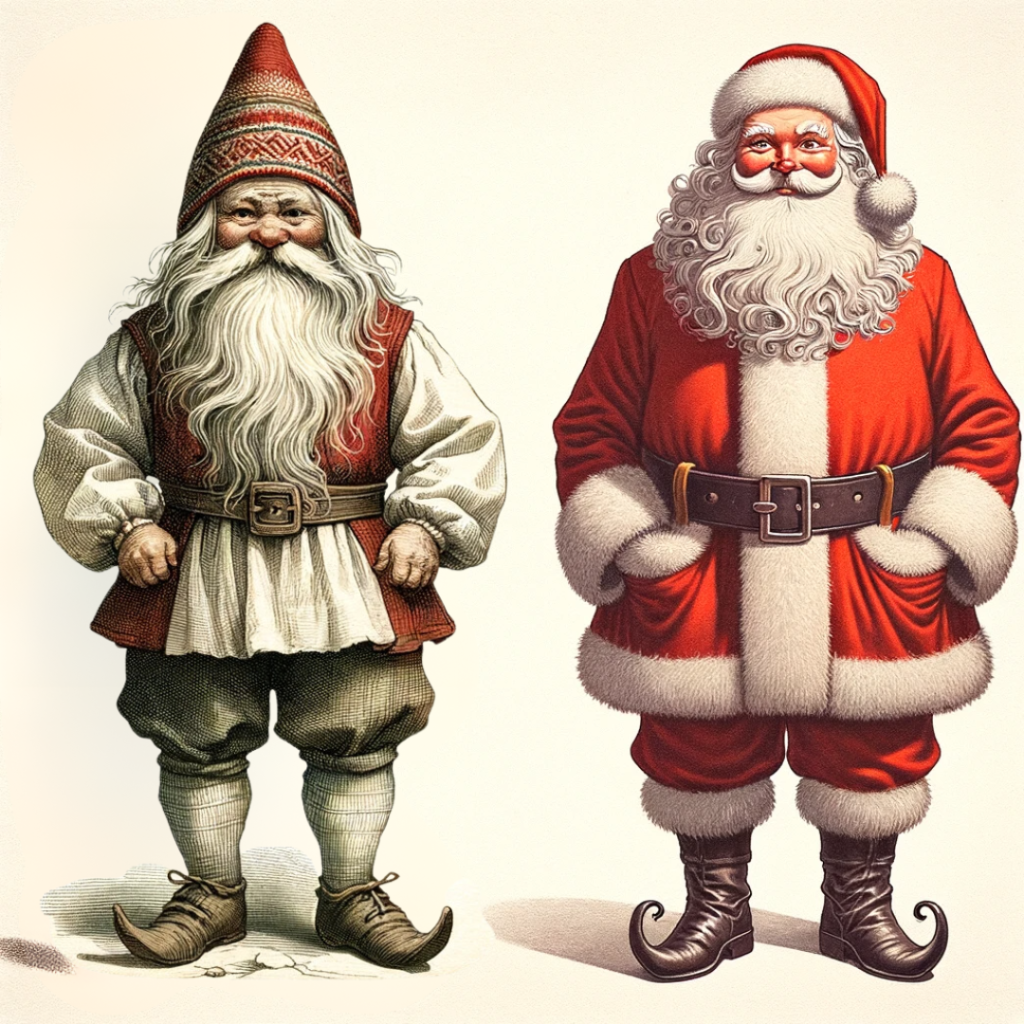
In Norwegian Christmas traditions, the Nisse figures prominently, embodying the country’s rich folklore. The traditional ‘fjøsnisse‘ is a mischievous, benevolent farm spirit, depicted as a small, elderly man in farmer’s attire, signifying a connection to rural Norway. Contrasting this, the ‘julenisse‘ aligns with the globally recognized Santa Claus, symbolizing the universal Christmas spirit. Celebrated in decorations and stories, especially by children, the Nisse, whether as fjøsnisse or julenisse, are believed to bring joy and protection. A bowl of porridge left out on Christmas Eve is a customary gesture of gratitude, ensuring their goodwill. This dual representation of Nisse captures the essence of Norwegian Christmas, blending local tradition with global influences.
Luciadagen: A Festival of Light
A Day of Serenity and Song
Luciadagen, celebrated on December 13th, is a festival of light that brightens the dark Scandinavian winter. This day, dedicated to Saint Lucia, is marked by processions where children, dressed in white gowns and wearing crowns of lights, sing traditional songs. A key element of this celebration is the lussekatter, a type of sweet bun flavored with saffron and often shaped like an ‘S’. These golden-yellow buns are not just a treat for the taste buds but also symbolize the bringing of light into the darkest time of the year. In many households and schools across Norway, baking and sharing lussekatter is a cherished part of the Luciadagen festivities.
The most popular song to sing, often referred to as Luciasangen is about Saint Lucia and the dark winter months.
Julebukk: A Unique Norwegian Tradition
A Twist on Trick-or-Treating
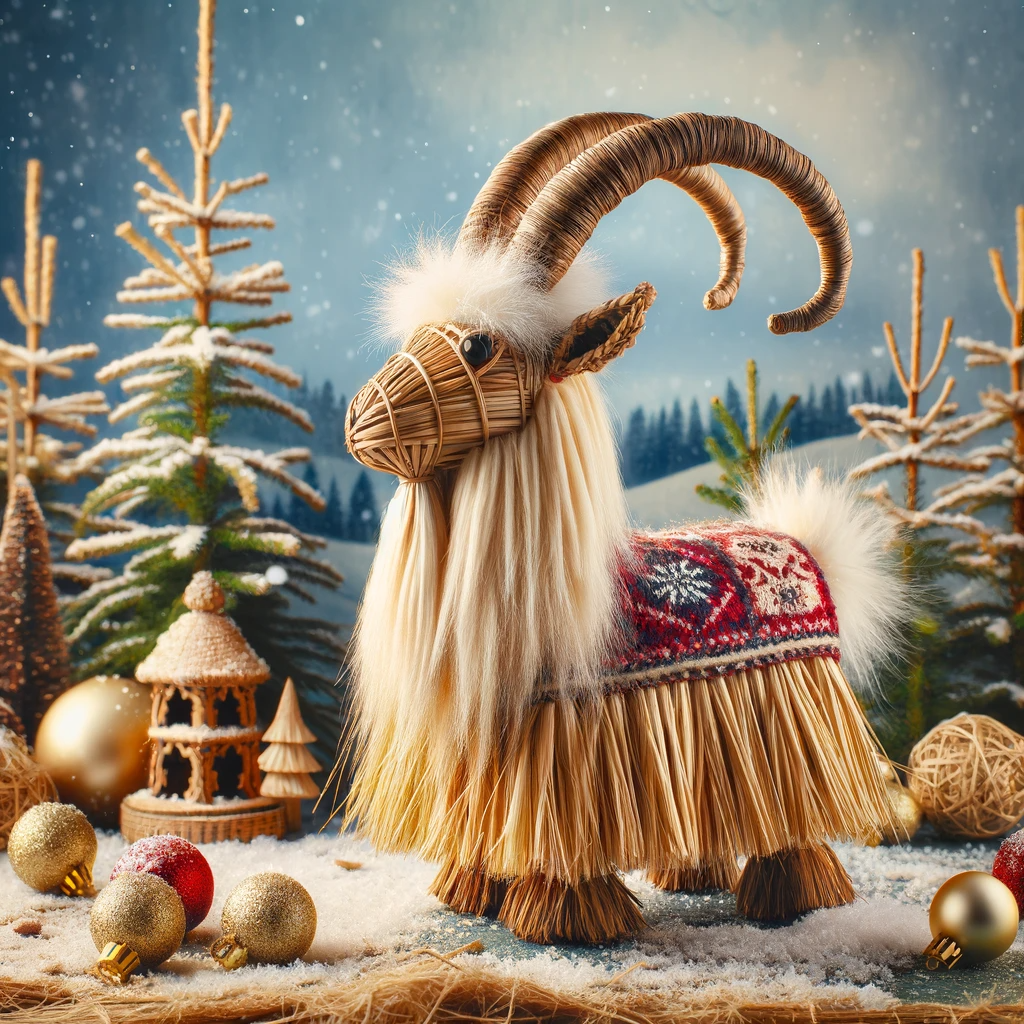
Julebukk, or ‘Yule Goat’, carries multiple meanings in Norwegian tradition. While it can refer to the Yule goat made of straw, a prominent Christmas decoration, the term “å gå julebukk” refers to a different aspect of the tradition. Historically, this involved individuals dressing in costumes, sometimes as goats, and visiting neighbors to perform songs and plays, receiving food or drink in return. Over time, this tradition has evolved. The goat aspect is less emphasized, but the custom of dressing up and visiting neighbors endures. Nowadays, it’s typically children who partake in Julebukk during the Christmas season. They wear various costumes, not necessarily goat-themed, and go door-to-door, singing Christmas carols in a manner similar to trick-or-treating in the United States, with the goal of receiving sweets.
Lutefisk: A Christmas Delicacy
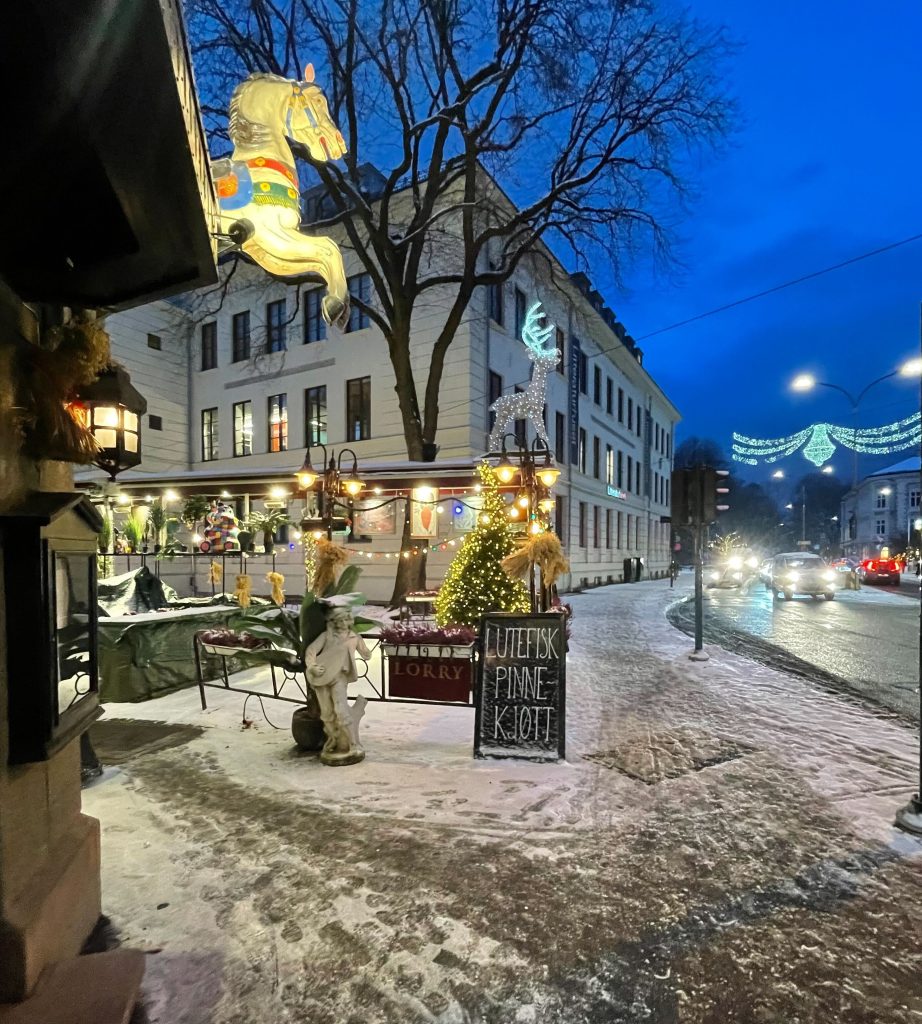
Photo: Mathilde Bache Wold
An Acquired Taste
Lutefisk, a traditional Norwegian delicacy, is a Christmas staple in many homes across Norway. Made from dried white fish rehydrated with lye, its gelatinous texture offers a unique culinary experience. During the festive season, it’s typically served with peas, crispy bacon, and potatoes. This combination not only complements the lutefisk but also adds texture and taste to the dish. For many, it’s a quintessential part of Norwegian Christmas, evoking nostalgia and curiosity. Lutefisklag is an annual dinner arranged between friends with the point of gathering for a lutefisk-dinner. Enjoying lutefisk during the holidays is a cherished tradition, embodying the spirit of Norwegian Christmas celebrations.
Syv slag julekaker: A Sweet Tradition
Seven Kinds of Christmas Cookies
In Norway, the tradition of “syv slag til jul,” or Seven Kinds of Christmas Cookies, is a cherished part of the holiday season. Each family tends to have their own preferred varieties, but there are some classic types that are commonly found across Norwegian homes. These cookies are not just treats for the palate; they are steeped in tradition and are often baked together with family and friends, making them a symbol of togetherness and festive cheer.
The seven traditional Norwegian Christmas cookies typically include:
Krumkake – Delicate, thin cone-shaped wafers made with a special iron and rolled into cones, often filled with whipped cream.
Pepperkaker – Crisp, spicy gingerbread cookies, cut into various shapes and sometimes intricately decorated.
Goro – Another cardamom-flavored wafer cookie, but thicker and richer than Krumkake, embossed with intricate patterns.
Berlinerkranse – Wreath-shaped butter cookies, rich and crumbly, often decorated with sugar.
Sandkaker – Tender, almond-flavored tarts with a sandy texture, usually baked in small, fluted tins.
Sirupsnipper – Diamond-shaped gingerbread cookies with a touch of syrup, often adorned with a blanched almond on top.
Fattigmann – A cardamom-flavored dough deep-fried into bowtie shapes, dusted with powdered sugar.
Baking these seven types of cookies is a labor of love and a way to celebrate the festive season. For many Norwegians, baking seven different julekaker is a goal for the pre-Christmas season, and is sure to be mentioned to friends and colleagues. Each cookie has its own unique taste and texture, making the act of baking and sharing these treats a highlight of the Norwegian Christmas experience.
The Festive Julebord
More Than Just a Christmas Party
The julebord, a quintessential part of Norwegian Christmas traditions, epitomizes the spirit of festivity and unity. This grand pre-Christmas feast brings together friends, families, and colleagues in a celebration of togetherness and the year’s end. However, in recent times, the julebord has come under scrutiny for its association with excessive alcohol consumption, raising concerns about health and social conduct. While these gatherings are known for their vibrant atmosphere, complete with meals, dancing, music, and speeches, there’s a growing emphasis on enjoying the event responsibly. In essence, the julebord remains a treasured Norwegian custom, fostering community bonds and heralding the festive season, but with a renewed focus on moderation and wellbeing.
Julaften: The Heart of Norwegian Christmas
A Night of Magic
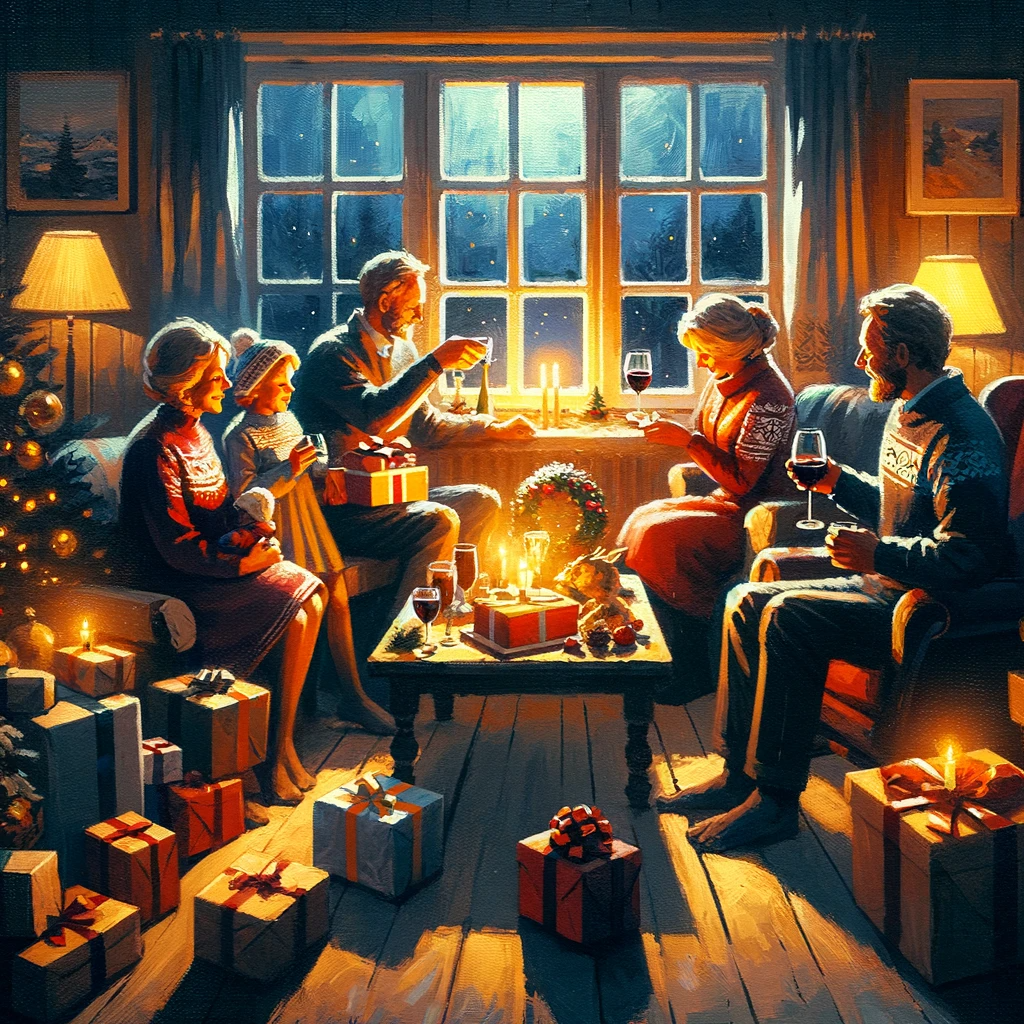
Julaften, or Christmas Eve, is the pinnacle of the Norwegian Christmas season, a night steeped in tradition and familial warmth. In Norway, this evening is when the main celebrations occur, centered around a festive family dinner that’s as much about the food as it is about togetherness. Traditional dishes take center stage, with each region having its own specialties. The most common fare includes ‘ribbe‘ (roasted pork belly), often served with sauerkraut and boiled potatoes, and ‘pinnekjøtt‘, dried and salted lamb ribs, rehydrated and steamed over birch branches. Along the Norwegian coast, ‘lutefisk‘, a lye-soaked fish dish, is a popular choice. These hearty meals are typically followed by ‘riskrem‘, a sweet rice cream dessert, often served with a red berry sauce. Julaften is a time when families gather around the table, sharing these traditional delicacies, exchanging stories, and enjoying the warmth of each other’s company, truly embodying the spirit of Norwegian Christmas.
Somewhat unique to the Norwegian Christmas Eve, is the exchanging of Christmas presents in the evening, rather than the morning after. After dinner, the families tend to gather around the Christmas tree and open their presents.
Romjul: The Quiet Time
A Time for Reflection
In Norway, Romjul, the time between Christmas and New Year’s Day, is cherished as a period of tranquility and reflection. It’s a time when the festive hustle subsides, and Norwegians enjoy the quieter aspects of the season. Romjul is marked by a slower pace of life, allowing for rest and quality time with family. Many indulge in leisurely activities such as long ski trips (skiturer) in the snowy landscape, cozy gatherings around the fireplace, or simply enjoying the lingering festive atmosphere. This period also offers an opportunity for people to visit friends and relatives, exchange late Christmas gifts, or partake in outdoor activities like skiing, a favorite Norwegian pastime. The serene ambiance of Romjul provides a perfect balance to the lively celebrations of Christmas, embodying the Norwegian appreciation for nature, simplicity, and the joy of togetherness during the holiday season.
Juletrefest
A Festive Gathering
In Norway, the Juletrefest, or Christmas Tree Party, holds a special place in the heart of Christmas traditions. Traditionally celebrated between Christmas Day and early January, the Juletrefest has evolved, with many now choosing to hold it before Christmas, combined with the juletretenning (Christmas tree lighting). Held in community centers, schools, or church halls, these gatherings are characterized by a beautifully decorated Christmas tree, fostering a sense of community and joy
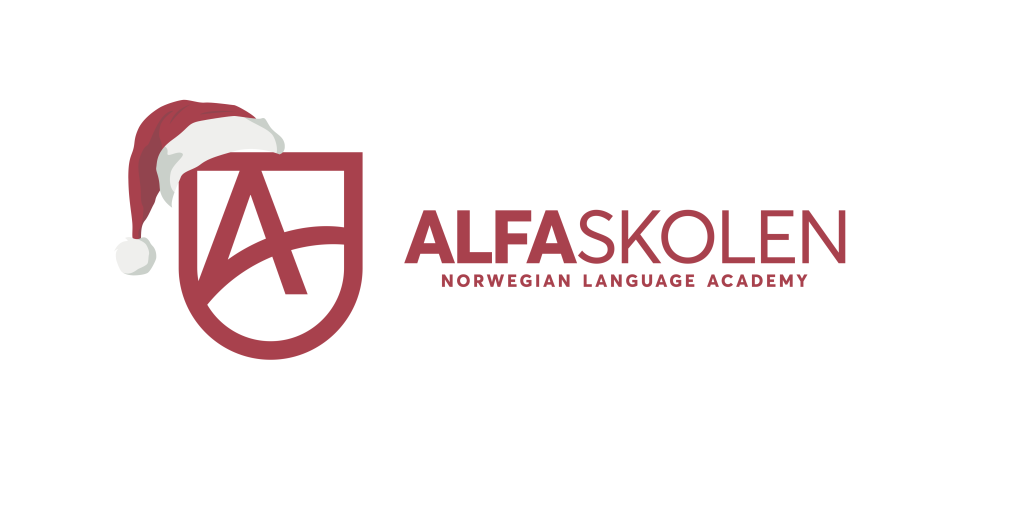
After journeying through Norwegian Christmas traditions, from the luminous Lucia processions to the heartwarming Christmas feast, I hope you feel a bit closer to the spirit of Christmas in Norway. Whether it’s tasting a piece of lutefisk or singing carols while going “julebukk”, each tradition has its own charm and significance. As we approach Christmas Eve, it’s time to embrace these customs, gather family and friends, and share gifts in love and gratitude.
The Norwegian Christmas is a delightful mix of old and new, local and global, making this time of year both unique and universal. Through this blog, I hope you’ve gained an insight into how we in Norway celebrate this special time, and perhaps found inspiration to incorporate some of these traditions into your own celebration. Merry Christmas and warm wishes from Norway!
Tags:


